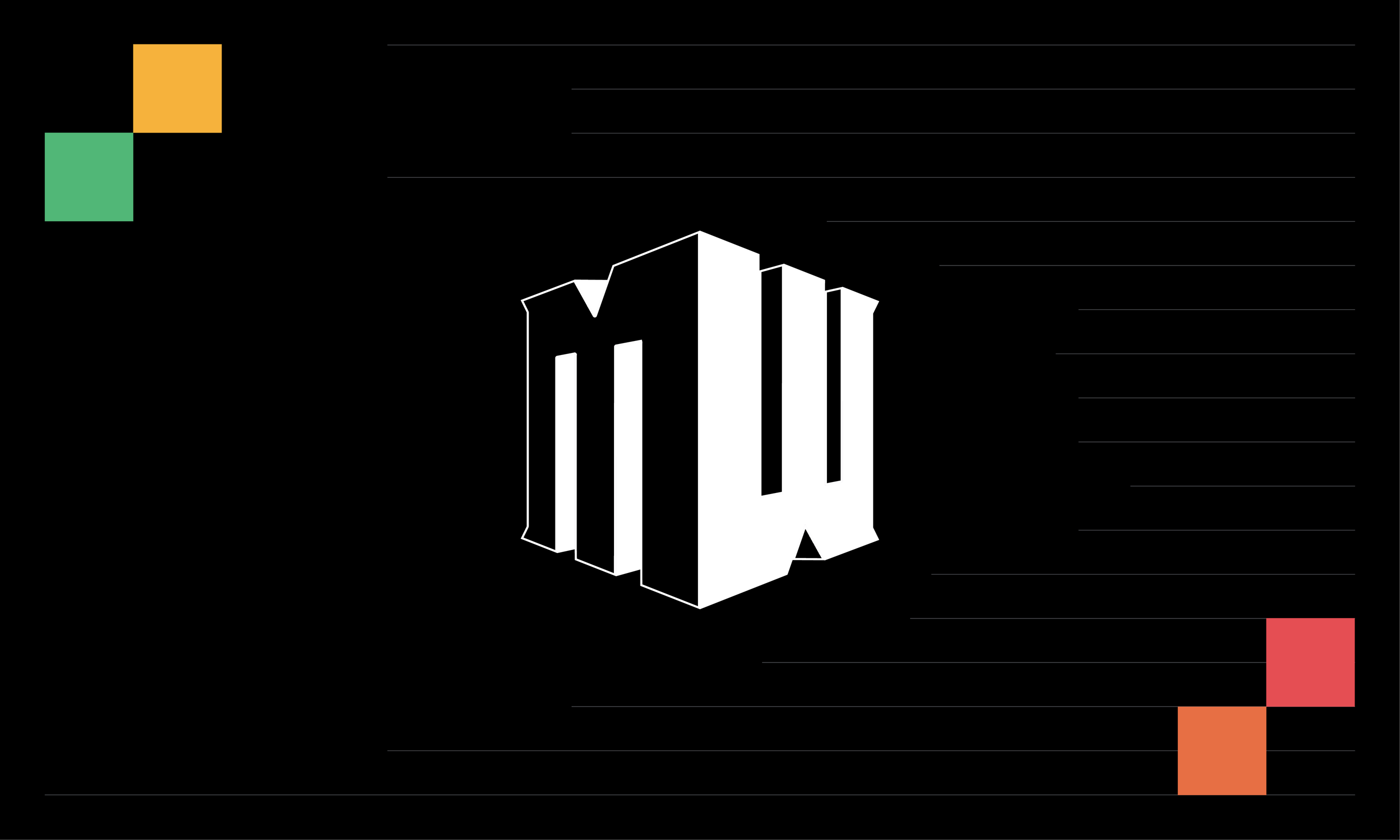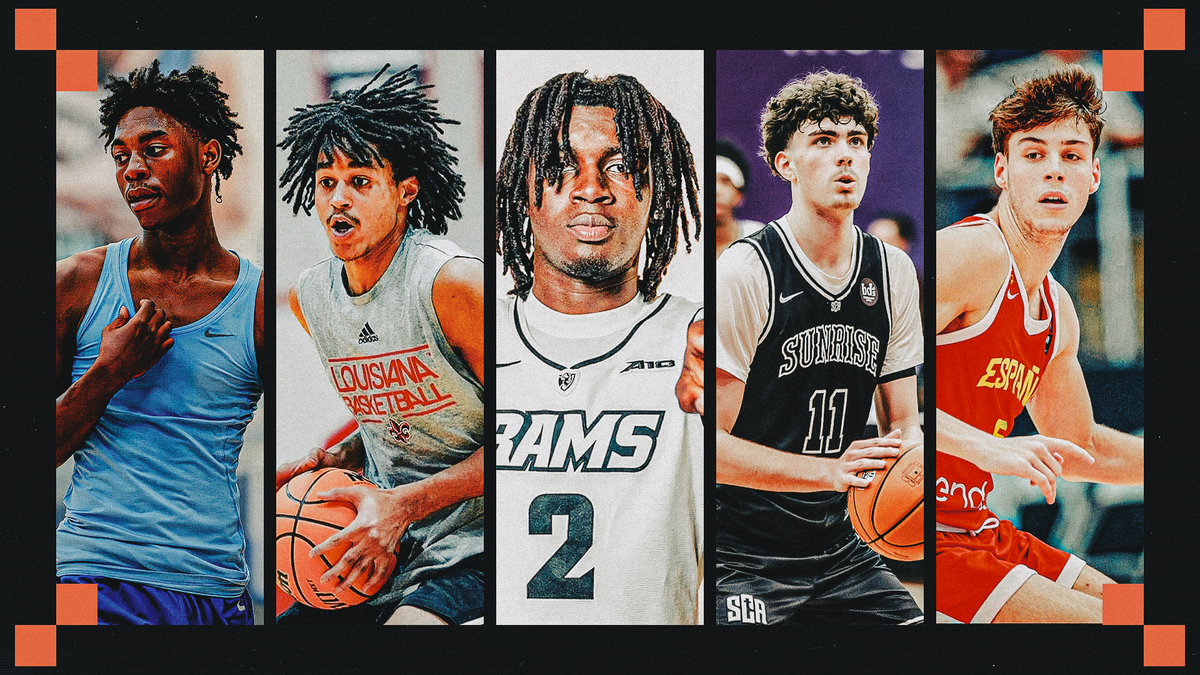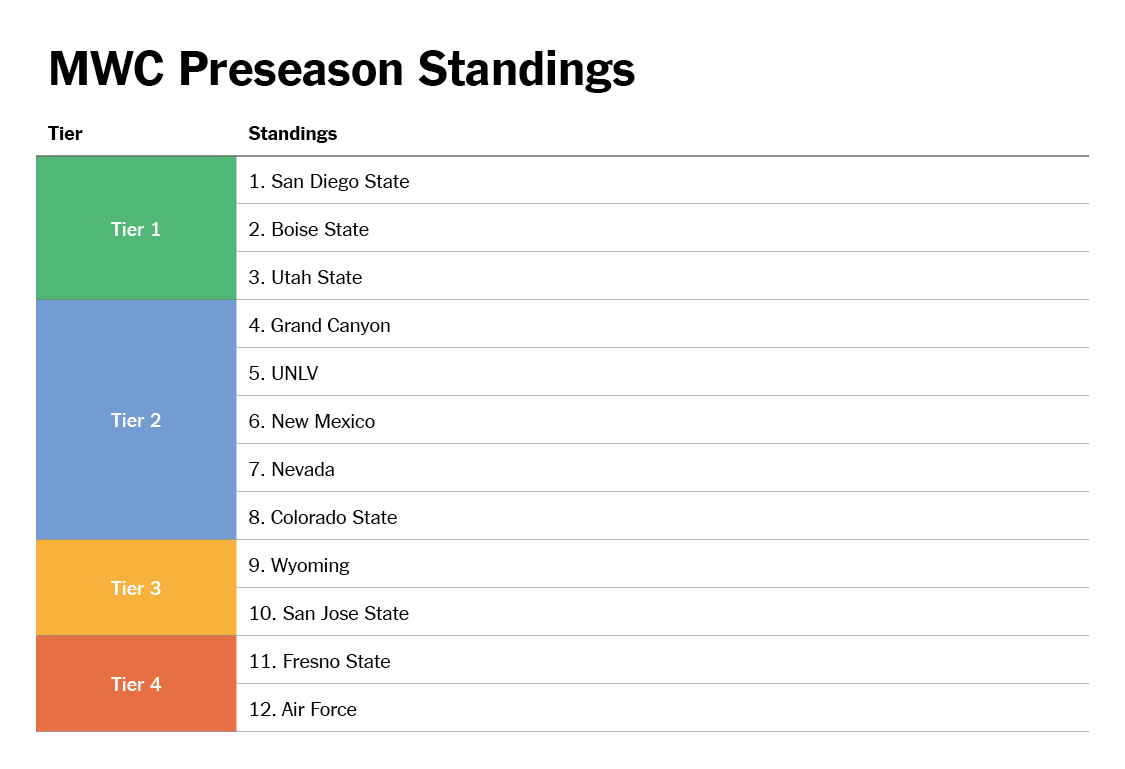
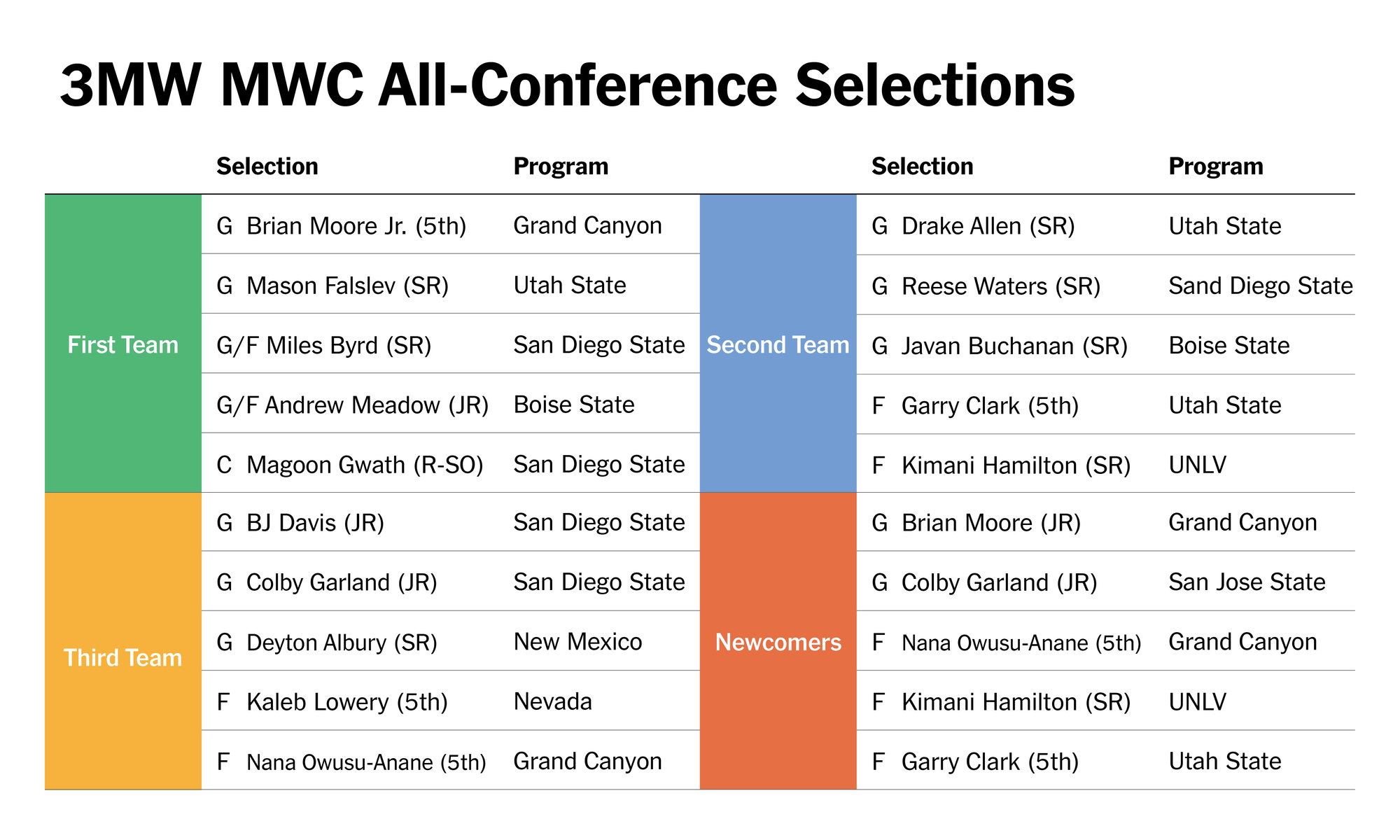
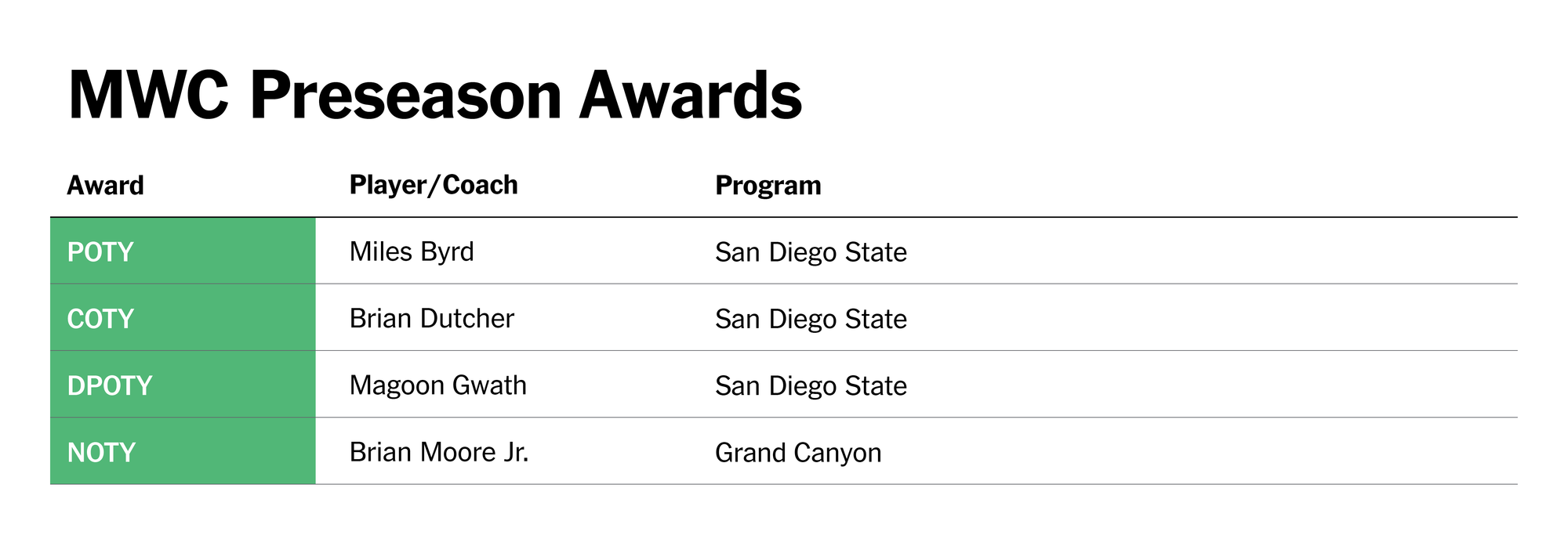
1) San Diego State
2) Boise State
Key Returners:
Pearson Carmichael, Andrew Meadow, Javan Buchanan, RJ Keene
Key Newcomers:
Dylan Andrews, Drew Fielder, Dominic Parolin (redshirted in 2024-25), Spencer Ahrens
Key Losses:
Tyson Degenhart, Alvaro Cardenas, O’Mar Stanley
Roster:

Reasons for Optimism:
For five straight seasons, these guys have won 13 or more conference games. Five! Four straight top-50 KenPom finishes, too. This program is a model of consistency, which is pretty remarkable in an era where everything changes at hyper-speed. 75-29 in conference games over the last five years, guys. I think we should appreciate them while we have them.
While the legendary Tyson Degenhart (the all-time scoring leader in program history) and quality PG Alvaro Cardenas have departed, Boise still returns three starters, an emerging sixth-man-turned-starter, and two P5 starters added to the mix. Outside of San Diego State, it’s the roster I feel best and safest about just because I know what I’m working with here. The Leon Rice floor is pretty high these days, and you can count on them being in the Tournament mix and probably the KenPom top 50 yet again.
Despite losing those key guys I’m more favorable towards Boise’s offense this year. It starts with one of the whitest white men we’ve ever seen in Andrew Meadow, a very good spot-up shooter who developed a newfound ability to get downhill last year. Meadow has thankfully gotten a haircut to add downforce, which is possibly why his rim attempt rate increased by 11% last year from 26% to 37%.
With Meadow on the court, Boise attempted three more free throws per 40, committed fewer turnovers, and was better offensively. He’s a black hole when he gets the ball - a 3.9% Assist% is hilariously low - but it’s hard to be mad at him when he turns that into 57% 2PT/35% 3PT/84% FT. Meadow is one of four returners that are exactly 6’7”. One, RJ Keene, is the backbone of Boise’s typically strong wing defense. With Keene on the court last year, Boise was 11 points better per 100 and held a +14.5 rebound margin per 100. Will he shoot a basketball? Unlikely, with an earth-shattering 7.3% Usage%, but as a defender he’s a great piece.
I also admit being really into Javan Buchanan, one of the great undersung bench pieces of last year. Buchanan was one of 17 players last year to post a PRPG of +2, an OBPM and DBPM of +2 each, and a 115+ ORtg on 20% USG. Considering 13 of the other 16 were either on P5 teams or played for Gonzaga (a key outlier here was Taelon Peter), he’s in good company. But it’s a different lower-minutes guy that has mine, and everyone’s, attention. Over the final six weeks of last season, Pearson Carmichael went from a lightly-used freshman returning from injury to arguably the team’s third-best player after Degenhart and Meadow.
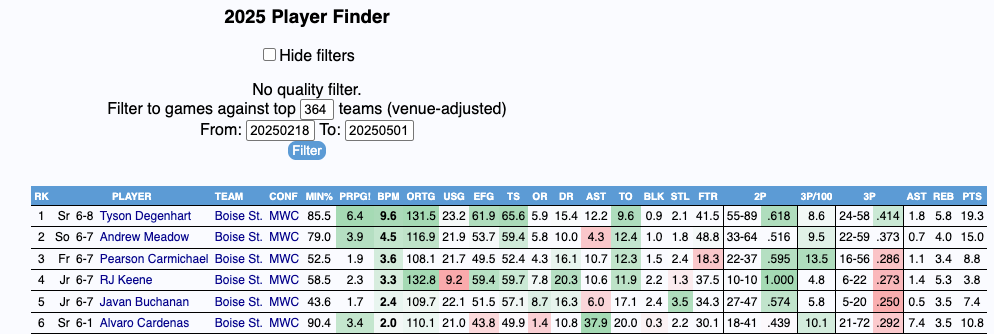
The counting stats may not drive you wild, but in that span of time he played like a top-40 freshman in the country and had higher BPMs than several Guys You Would Know who have way more hype: Jeremiah Wilkinson, Ryan Mela, Juke Harris, and one Egor Demin. It helps when you have Degenhart leading the way, obviously, but your fellow mid-major statistical comps being guys like Matt Mitchell (SDSU) and Richie Saunders (you’re aware) with KenPom’s top pick for you being freshman MJ Walker (Florida State) is…something!
Add all that together and it’s an offensive group I like. Someone needs to take a step forward from a shooting perspective, with Carmichael or fellow sophomore Julian Bowie being the most obvious candidates to me, but if they just get one this is an offense with scoring upside that can get to the paint with high frequency and should be really good on the boards. Again. Boise!
Causes for Concern:
I have two major ones.
1) What if Dylan Andrews doesn’t work out?
Mr. Andrews comes in from UCLA, where he was last year’s starting point guard for a 7 seed. Pretty good! I think we would all agree and look at that and say “that is good.” Now, to actually look at Andrews’ stats: 97 ORtg on 19% Usage% after a 101 ORtg on 22% Usage% the previous year, neither of which are fabulous. Nearly as many turnovers as assists. Pedestrian shooting (career 33% on 283 attempts from deep, 76% from the line). He also left a horrific final impression against Tennessee (five turnovers, zero points) and looked completely out of his depth.
Now, there is no Tennessee in the Mountain West, but there is San Diego State, who I think we’ll all agree is Woke Tennessee. Or better weather Tennessee. I don’t really know where I’m going with this, but the point is that Andrews has to play SDSU twice, one of which will be their first conference road game of 2026 (third overall). I have to admit it worries me greatly on their behalf because against Tier A comp at KenPom (~top 50 opponents), Andrews posted an appalling 77 ORtg, shot 33% from the field/62% from the line, and had more turnovers than assists. That cannot be the point guard performance you get if you want a Mountain West title.

The deeper issue is that if the answer to this is “Andrews didn’t work out” or he can only give you 20 decent minutes I have no clue where you turn next. Bowie played PG a little as Cardenas’ backup last year but has profiled at every level as an off-ball shooter, not a guy trusted with frequent ball-handling or running of offense. The alternate option here is some sort of weird point forward thing with Carmichael, which, again, is not how he’s profiled at any level.
2) What if Drew Fielder doesn’t, either?
You could go with “what if the shooting doesn’t work” here, but Boise just got done having a top-40 offense despite ranking 283rd in 3PT% and has had four straight top-50 teams with precisely one offense peaking above 63rd. I can’t really be worried about the shooting that much when I know 1) they get to the free throw line often 2) they routinely have low turnover rates 3) they’re dominant each way on the boards basically every year.
But. I can be worried a little bit about Mr. Fielder. Rice’s teams never block shots, but it’s not a huge shock to me that his two best defenses (‘21-22 and ‘22-23, both top-30) were also his two best defenses in terms of Block%. The highest Block% on this entire roster is actually Buchanan, who posted a 3.1% Block% last year as a sometimes super-small 5. Fielder not blocking shots isn’t that frightening to me because Boise gets around that anyway with a packed-in defense that forces a billion floaters and midrange jumpers, but it’s everything else I find concerning.
For one, Fielder was worse from his freshman to sophomore year. His 41% 3PT from freshman year fell to 25%, his DBPM fell from +1.2 against top-100 competition to +0.5, his Usage% plummeted, and his overall BPM dropped from +2.7 to -0.2. Now, it’s obviously possible he was in a bad system or out of place (or both), and a reset here could really do him good. But: if he’s not at least his freshman year self, he’s not a good enough starting 5 for this team.
If Fielder can’t do it, the alternate options are either returning from injury (Lehigh transfer Dominic Parolin, who’s better offensively but worse on defense) or a true freshman (Spencer Ahrens) that’s well-liked but highly inexperienced. Any number of guys can play 2-4 on this team that I’m largely fine with, but 1 and 5 do make me think.
Bottom Line:
We have San Diego State in a separate tier, at least via 3MW's rankings, and Utah State directly after Boise, but outside of the supernova SDSU team of 2019-20, no Mountain West team has lost fewer than three conference games over the last nine seasons. Boise, who’s won 13+ conference games in five straight seasons, is going to be there the same way they always are: rebounding excellence, a top-notch home court advantage, and stout wing defense.
3) Utah State
Key Returners:
Jerrod Calhoun (!), Mason Falslev, Drake Allen, Karson Templin, Tucker Anderson
Key Newcomers:
Kolby King, Garry Clark, Zach Keller, MJ Collins, Luke Kearney
Key Losses:
Ian Martinez, Dexter Akanno, Deyton Albury, Aubin Gateretse
Roster:

Reasons for Optimism:
Folks, I know you’re going to be floored to hear it: Utah State is Good again. More specifically, Utah State’s offense will be Really Freaking Good once again. Last year’s team finished 20th in offensive efficiency, and the last four - under three different coaches! - have all finished 55th or higher and 29th or better in 2PT%. Improbably, this has become a program that more or less runs itself regardless of who’s on the sideline. It’s one of our most European football programs going: the manager changes often, but the play remains the same.
Anyway, the offense will be good once again because Mason Falslev opted to finish out his career at Utah State instead of transferring elsewhere. He grew up just six miles from USU, and certainly, staying home to finish the proverbial job. With just one NCAA Tournament win this year, he would be the first Utah State player to register multiple Tournament wins at the school since 1964. Having Falslev as your bedrock is crucial; he was one of just 37 players in the nation last year (one of three in the MWC) to make 125+ twos and 50+ threes. That’s a strong base to work with.
Per EvanMiya, Falslev is the second-best player returning in this league, along with being the best offensive piece anyone has on their side. The third-best player is Drake Allen, who helps form a nasty backcourt with Falslev. When on the court together last year, Utah State shot 56% from two and 37% from three with a sky-high Assist%. It was some sort of magic.
In its own right, this is quite a powerful crew. That alone would be enough to be interesting, but it doesn’t stop there. It says something about something for USU to grab sometime Butler starter Kolby King to round out their backcourt. King’s offense is not something I’m particularly high on - good deep shooter, little else - but as a defender, he’s good, and as a bonus he’s an above-average rebounder for his size.
Even the forwards here have serious upside. No one on earth seems to be talking about Karson Templin, who keeps chugging along as a fantastic rebounder and offensive piece who started making (a few) threes last season. I’d describe him in a complementary way as annoyingly lethal on offensive putbacks. They also went and got Garry Clark from TAMU-Corpus Christi, a player I’ve loved for years that’s another elite-rebounder and gives Jerrod Calhoun a big man to throw it down to.
I guess if you’re looking for offensive concerns, the ones about athleticism and scaling up always remain, and as usual Utah State will be a team that takes a lot of threes, which leads to built-in nights where you only make 21% of them or something. But…well, Tucker Anderson might not start on this team, and Anderson shot 58% 2PT/33% 3PT/81% FT in conference play last year. This is probably a top-25 offense for the third time in four years.
Causes for Concern:
Here is the downside of the Utah State Experience: the last four defenses have gone 68th -> 70th -> 82nd -> 150th. Now, some of this is obviously due to constant coaching turnover, constant roster turnover, and the inherent disadvantages a school in a Utah city with ~52,000 residents might have as it pertains to athleticism. There are a few ways to register that in stats.
Against top-100 competition last year, Utah State had the 159th-ranked defense and got out-rebounded. Less than an ideal stat, to be certain. Worse was this: in these same games, the Aggies’ offense was almost nine points worse per 100 possessions, adjusted for competition. Almost all of this came from a severe drop-off in rim production (10% in attempt rate, 6% in FG%) and from an even more extreme drop-off in second-chance points (11% lower OREB% than games against teams outside of the top 100). They became super reliant on kicking it out for threes and couldn’t get to the rim nearly as well. Does Kolby King change that? I don’t really think so, which does put an upper cap on how good they might be.
More serious of a concern is that I cannot name a soul on this roster I would trust as a rim protector. The average Calhoun team is not one that is elite on defense. Through eight seasons in Division I he’s yet to have a defense finish above 150th, and only the Youngstown State team in 2023-24 (72nd) ranked above average in opponent 2PT%. Last year, Calhoun introduced an amoeba-like matchup zone that could look like a 2-2-1, a 1-3-1, a 2-3, a 3-2, or literally anything depending on the possession.
Sometimes, it worked, and it did help cover up the fact USU was abhorrent at man-to-man defense. Sometimes, the fact that USU had one of the highest opponent three-point attempt rates and one of the worst catch-and-shoot rates allowed caught up to them. Such is how you lose 93-66 to Colorado State when they shoot 67% from deep.
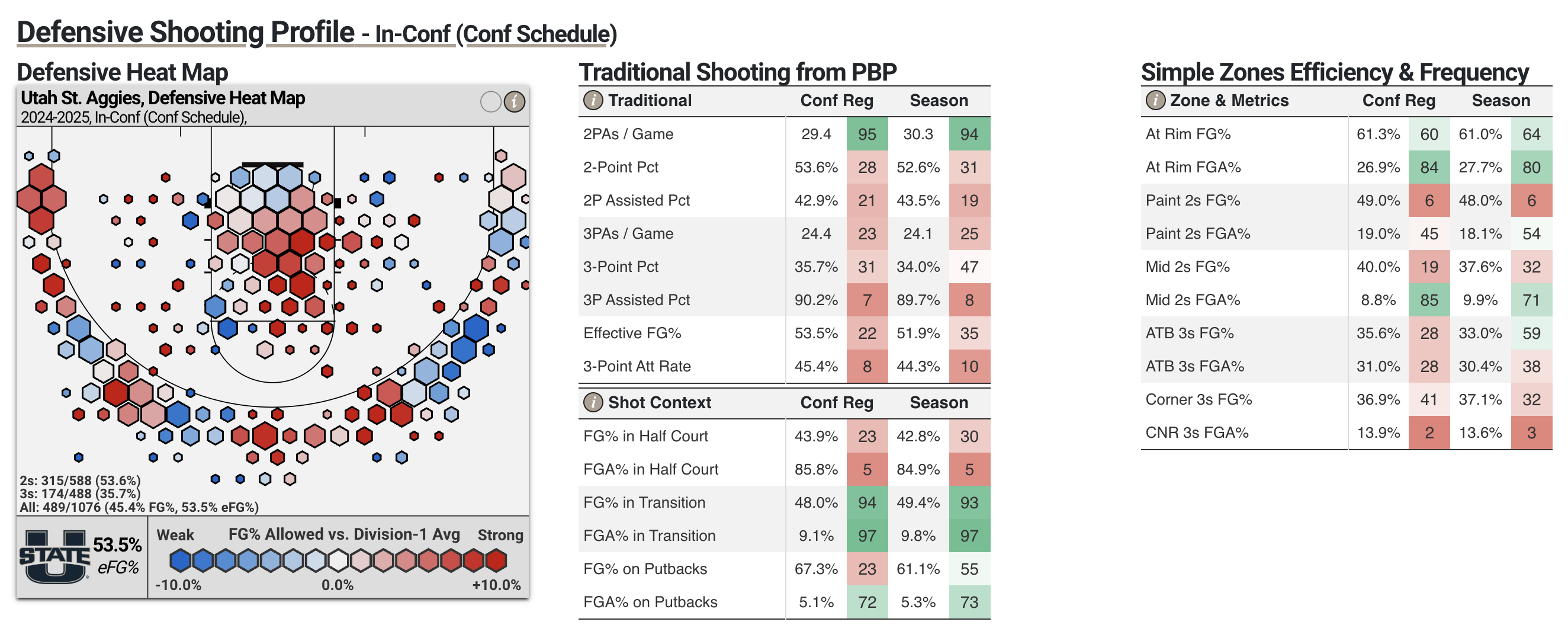
This won’t change until there’s some sort of interior defensive system that discourages opponents with regularity at all. The zone helps delay shot attempts, but USU sat 257th in 2PT% allowed against the 95th-hardest slate of offenses. The best shot here might be Utah transfer Zach Keller, who is large and blocks shots but is probably this team’s worst offensive player. I don’t think Luke Kearney from Air Force fixes it, either. The best chance here is riding variance to some extreme highs and some potentially very low lows, which could be great or terrible for a program striving for its second Tournament win since 2001.
Bottom Line:
Well, have you liked the last four Utah State teams? You’re probably gonna like this one a lot, too. Mason Falslev will battle with Miles Byrd for MWC Player of the Year, and in terms of offenses this league has to offer, this is pretty easily the best of the bunch. If they can get their defense to what I’ll call normal bad - just top 100! - they’ll be a real March threat to deal with yet again.
4) Grand Canyon
Key Returners:
Makaih Williams, Caleb Shaw
Key Newcomers:
Dusty Stromer, Jaden Henley, Brian Moore Jr., Nana Owusu-Anane, Kaleb Smith, Wilhelm Breidenbach, Evan Boisdur
Key Losses:
Tyon Grant-Foster, JaKobe Coles, Duke Brennan, Rayshon Harrison, Lok Wur, Collin Moore
Roster:
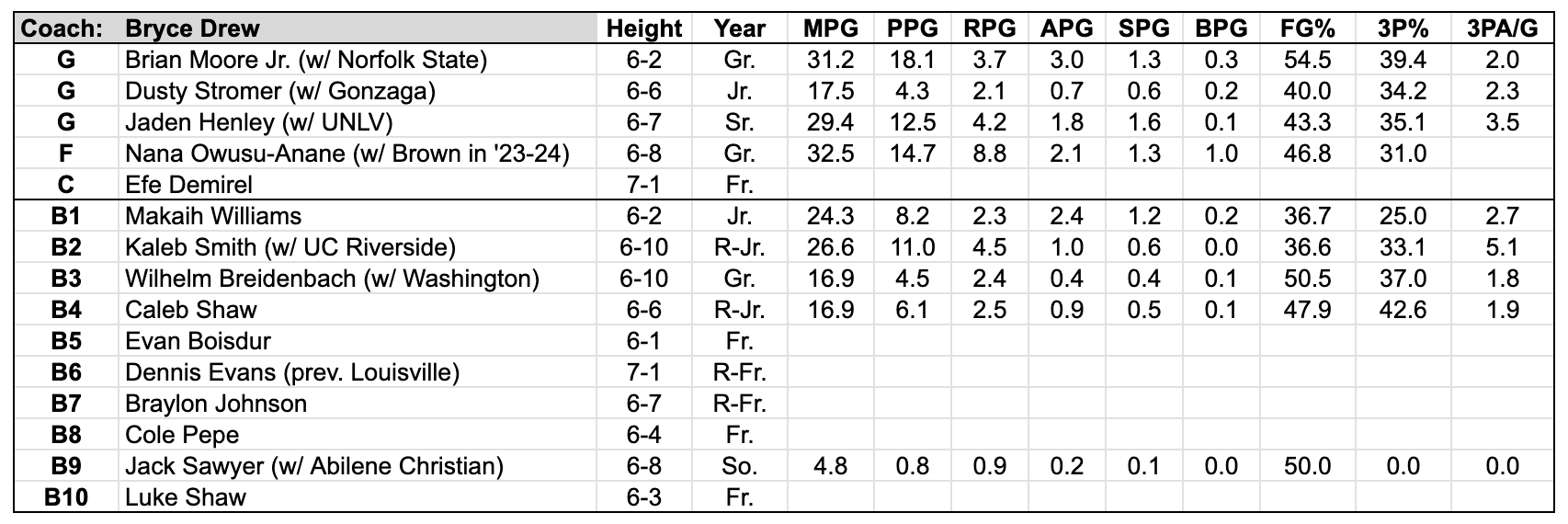
Reasons for Optimism:
Well, for one, this school has infinite money. For another, the hire of Bryce Drew seems to have come at a perfect time. After topping out under Dan Majerle with a pair of excellent 11-3 WAC seasons in 2016 and 2017, Drew was hired for the COVID year after flaming out at Vanderbilt en route to an ignominious 0-18 SEC record. The results at GCU have been spectacular: four NCAA Tournaments, the school’s first Tournament victory in 2024, and four top-100 defenses that are tough as nails on the interior.
It does say something to me that last year’s GCU was a fairly serious disappointment, failing to win the regular season title in a just-okay WAC despite having a roster no less than four times more expensive than any other. And yet: that serious disappointment still resulted in a 13 seed. While most pieces of said 13 seed are gone, the benefit of having an outsized budget (likely only second in the MWC to San Diego State) is that you can reload with relative ease, getting a UNLV starter, a key Gonzaga contributor, and a grad student who’s started at two Big Ten schools. Oh, and the 2025 Lou Henson Award winner for the best mid-major player.
Yet in terms of indispensability, one could argue the most important player is a returner. Makaih Williams stole a starting spot from Tyon Grant-Foster for most of the back half of the season. Williams is extremely hot-and-cold from deep (45% 3PT freshman year, 26% last year), but he gets to the line extremely often and, at least by on/off numbers, he was GCU’s second-best defender last season.
But, as is standard with GCU in the Money Ball era (two separate words, not the one), it’s about the transfers. Numerous players could be picked as the headliner here, and if you go with Gonzaga transfer Dusty Stromer as your headliner, it wouldn’t be a bad pick. Stromer likely benefits from a change in scenery after threatening non-stop to break out at Gonzaga but never actually doing so. I’m also a huge fan of Brian Moore, Jr., the aforementioned Lou Henson Award winner and one of just three players 6’3” or smaller (Dylan Darling, ian Martinez) last year to post a 120+ ORtg on 25%+ Usage%. Moore is an active negative on defense, but pairing him with Stromer (generally pretty good on that end) balances it out.
But: what if I told you the most important player on this roster is actually a guy who played zero minutes in 2024-25?

Nana Owusu-Awane comes in from Brown after missing last season due to injury. Now, about four of you watch Brown basketball, so you may not remember that Owusu-Awane was his team’s best player and the MVP of the Ivy League semifinal against Princeton (19 pts, 15 rebs, 2 blocks, 2 steals) en route to a near shock upset Tournament bid. The Ontarian is an elite rebounder, has 27 made threes in his career, and has consistently graded out as a solid defender. If he’s ready to roll immediately after his year off, he could be a difference maker in Grand Canyon’s bid to go 1-for-1 in the Mountain West.
Causes for Concern:
Here’s your career shooting numbers from deep for this roster’s members: 26% (Owusu-Awane), 33% (Jaden Henley), 35% (Williams), 31% (Moore), 35% (Stromer), 33% (Caleb Shaw), 29% (Wilhelm Breidenbach), 34% (Kaleb Smith). That’s seven guys who can shoot and zero who you’d give any grade above average.
This is a problem when Grand Canyon’s general structure is built around guys who can get downhill early and often. Without some sort of plus shooting to open those driving lanes up, this offense can become cramped fast. Such was the limiting factor for last year’s team, easily the most talented in the WAC yet a group that finished 163rd in offensive efficiency thanks to shooting 31% from deep and having the 271st-best turnover rate. When you’re 331st in non-steal TO% despite a super-fast pace that means a lot of either 1) dangerous passes or 2) charges, each of which GCU ranked very highly in.
As such, I’m pretty confident that Moore, who was fantastic in late-clock situations at Norfolk and is an excellent tough shot maker, can probably bail a stale GCU offense out in bad possessions. I’m a lot less confident that there are legitimate plus shooters anywhere to be found here not named Moore. So: is this just Jovan Blackshear-era GCU (Drew’s first two seasons), which had offenses ranked 121st and 143rd despite being in the top-30 in offensive rebounding and top 10 in defensive eFG%?
There’s also an odd defensive question here I can’t resolve appropriately. I like a lot of what’s to offer here. GCU should be fantastic on the boards. All of Henley, Stromer, and Shaw are switchable and good on defense. Williams is a pest. But.
The reason why you were made aware of the last couple of Bryce Drew teams was not the offense. It was a defense that finished 32nd nationally in 2023-24 and 71st last year, with both teams finishing in the top 30 nationally in Block% and top 25 in 2PT% allowed. Owusu-Anane gets blocks, but his two years at Brown showcased someone who was a roughly average rim protector in the Ivy League. Like it or not, the Mountain West is a little better in that regard.
If you need stops down low, I would not turn to Breidenbach (one of the least physical 6’10” players out there, simply not his game). Smith, from UC Riverside, is the rare 6’10” player who has never blocked a single shot in two years of college play. Like, not one. So: do you think this is the year Dennis Evans finally figures out college basketball? Evans could barely touch the floor for an abhorrent Louisville team in 2023-24 and spent all of last season out with the same shoulder injury that kept him out for large stretches of his Louisville tenure. This is a former 5-star, but it’s now been three years since he played more than 20 minutes in a game. You better hope Owusu-Awane’s ready to go immediately.
Bottom Line:
It’s somewhat rare for what’s effectively a program up-transferring conferences, but I think Grand Canyon should be one of the most physically ready teams to handle an upgrade in competition. The rebounding upside here is immense, they’ll get fouled like crazy, and Brian Moore, Jr. makes a ton of sense to me as a guy who saves this offense from itself. But I simply don’t trust the non-Moore shooting enough to put them in title conversation, and there’s something to be said for just how difficult your first visits to San Diego State, Boise State, New Mexico, etc. are going to be.
5) UNLV
Key Returners:
Not a soul
Key Newcomers:
Everyone, but especially one Josh Pastner
Key Losses:
The entire team, but let’s be honest: you only remember Dedan Thomas, Jr.
Roster:

Reasons for Optimism:
It’s true, kids: when I was a youth, UNLV capital-M Mattered. I’m just a slight 31-going-on-32, and I don’t remember the peak Runnin’ Rebs days, but I do remember Lon Kruger leading a 7 seed to the Sweet Sixteen (one that hung quite well with Oregon!) and a program that made six NCAA Tournaments in seven years. Now, it’s a program that’s touched its KenPom program rank (75th) once in the last 12 seasons.
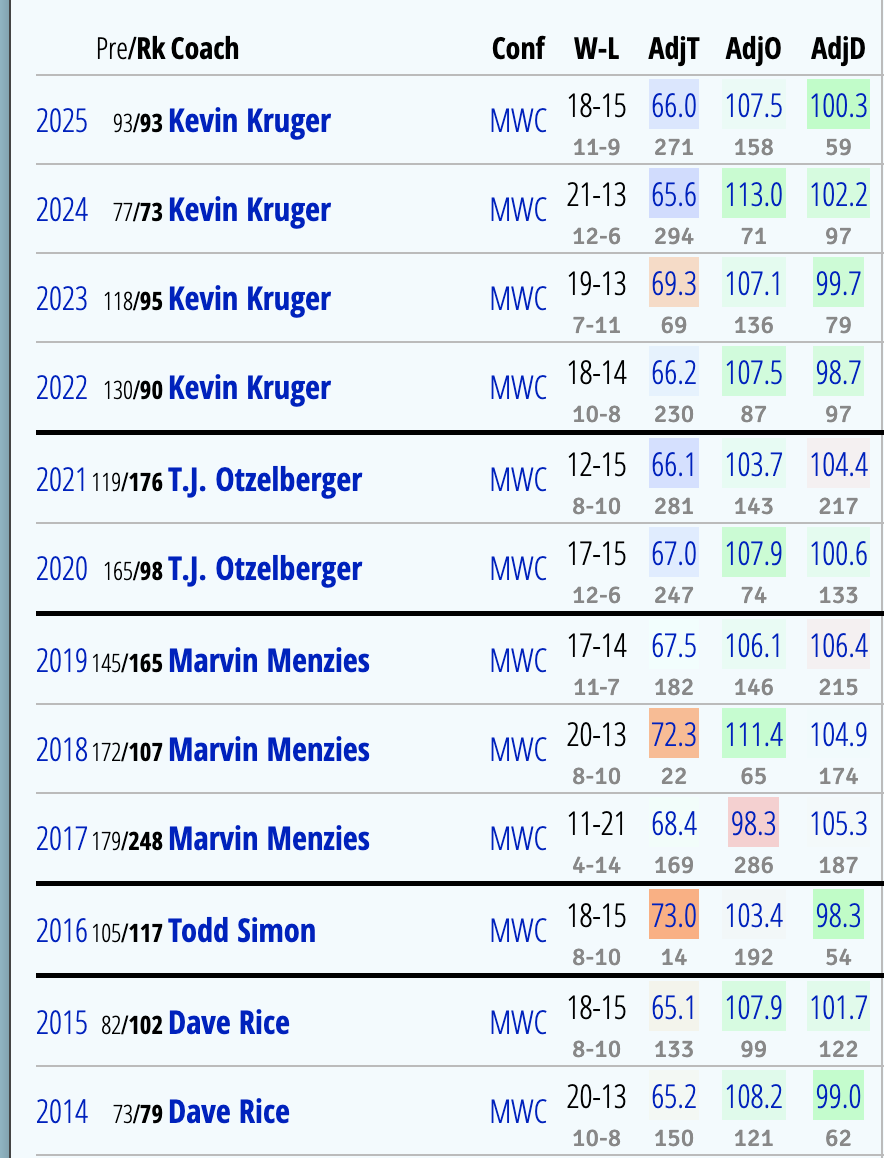
But! This is the optimism section, and I can hardly think of a coach more optimistic than Josh Pastner. Pastner’s coaching career going Memphis -> Atlanta -> Vegas is delightful given what we all know about the man. However, funnier and more impressive is the roster he assembled after two years off as a commentator: FOUR P5 transfers, a two-time First Team All-Big South post, a starter for a 32-win Big West team, a four-star recruit by at least one service, a New Zealander coming off his fifth (!) year of pro ball, and by God almighty, a player named Al Green. I be like dang? Well, yeah, I be like dang.
This team is all intrigue and question marks, good and bad. I have no idea how good or how bad they might be. But! I am pretty confident Kimani Hamilton should be quite good here. Hamilton comes over from High Point, who played one of the weakest schedules I can recall in modern history for a 13 seed, and as such there’s some skepticism of his translatability. Still, he’s a former P5 recruit (Mississippi State), and offensively, building what you do around a large wing who can isolate, post up, run the P&R, and grades out as a good jump shooter is something I approve of. Few tall wings in the sport are better passers than Hamilton was last year.
I also think Dra Gibbs-Lawhorn, via Illinois, will benefit a lot from a step down in competition. After an openly ugly freshman year, he popped to me as a smaller guard (6’1”) with utterly exceptional finishing ability (81%?!?), though his jumper is a negative at this point. Still, this is the same guy who was routinely around 35% from deep in high school, and as a secondary ball handler he offers a low turnover rate and good two-way impact. With Myles Che, the aforementioned starter for UC Irvine, this is a potentially excellent defensive backcourt.
Oddly enough, I also really like the shooting options across the board here. Che: 43% on 3 attempts a game last year. Howie Fleming, Jr. shot 42% from deep last season and is at 39% across his three non-injury college seasons. The previously-noted Al Green - THE REVEREND! - shot 43% on 125 attempts. There are guys here like DGL and Hamilton who can attack the rim very well, Ladji Dembele is an excellent offensive rebounder, and, again, DGL and Che form a very good defensive pairing. I’m intrigued, Josh!
Causes for Concern:
I’m also scared, Josh. It’s not you, it’s…well, actually, it might be you. In 14 seasons, Pastner has beaten his preseason KenPom ranking four times. The average underachievement is about 22 spots per season, which, if applied to their Torvik ranking of 73rd, would have them finish 95th and around 7th in the Mountain West. I obviously don’t have them there, but if you’re in Prove It mode with Pastner, you’re not alone. I love the guy’s enthusiasm. I just wish I loved the guy’s programs.
There are actual on-court things to worry about as well. For one, Pastner’s career track is that of someone who always has really stout rim protection, routinely ranking in the top 20 of Block% and 2PT% allowed at both Memphis and Georgia Tech. I don’t think that happens with this roster. Arizona transfer Emmanuel Stephen was exceptional as a rim protector in high school, but he’s barely played since 2023. He’s likely battling for a starting spot with Iowa transfer Ladji Dembele, who is certifiably not a rim protector. If neither works, it then falls to top-150 recruit Tyrin Jones, who is apparently out to start the season.
If the backbone of the good Pastner defenses is out, then it falls on Pastner to develop an aggressive perimeter defense, something he’s really only had once (COVID year) in the last decade. The backbone of the good Pastner offenses also may be missing, too. Typically, the best Pastner teams have had high-end talent on the wings and multiple guys who can drive and kick. I think they have the latter but I’m not terribly convinced of the former just yet. Do you trust Hamilton to translate seamlessly from a schedule in the 280s to the Mountain West? Can Fleming from UTRGV do the same? Is Naas Cunningham, who never saw the floor at Alabama, going to pop in his first year of serious college competition?
Even eschewing the usual transfer-heavy chemistry questions, this feels like a roster with a wildly huge range of outcomes. If the shooting sustains and you do generate a star on the wings, this is going to be a top-50 KenPom team in the mix for the conference title. If neither of those things happen and Stephen can’t carry over his high school performance as a rim protector, they might finish seventh in the league, closer to last than first. Either way, we’ll have the same “UNLV hosts the conference tournament” conversation we have every single March.
Bottom Line:
Fifth place is a punt for UNLV, who merely needs something positive to look forward to as a program. The fact Pastner can accumulate this level of interesting talent here is something nice, and if just a few things break their way, they could very well be a surprise Tournament team in Year One. Then again, they could just as easily be forgotten about by February.
6) New Mexico
Key Returners:
Nobody
Key Newcomers:
Everybody. But notably, Eric Olen, Deyton Albury, Kevin Patton Jr., Chris Howell, and Milos Vicentic
Key Losses:
The entire roster
Roster:

Reasons for Optimism:
While betting data is quite obviously not everything, it’s fairly useful knowledge to tell you how Vegas and its ilk view overperformance and underperformance. As such: would you be interested if I told you that, over the last four seasons, UCSD and Eric Olen were 11th-best out of 364 programs in cover rate in conference games (46-30-2 ATS)? Or that overall, they were 9th (68-49-2)? Or my personal top dog: 39-22 ATS as a favorite, the eighth-best rate of anyone favored more than 20 times since 2021.
However you slice it, Eric Olen is an overachiever and has made a real career out of it. It was one thing to take UCSD from Division 2 to D-I, but an entire other thing to take said program in a one-bid league to the top 40 in KenPom at season’s end in a record-setting year for high-major strength. Amongst schools who’ve transitioned to D-I in the last 25 years, only Belmont (#23, 2010-11) has them beat.
To hire that guy after you’ve had your best two-year run in over a decade is quite the nice accomplishment. Allowing him to bring over some of His Guys is always nice, too. Four total players from UCSD - two actual transfers, two recruits who were committed there - will be on the New Mexico roster this season. The best of these is Chris Howell, who served as a defensive specialist for Olen last year on a UCSD squad with a gigantic turnover margin in their favor. I can’t promise he’ll do much else, but he’s an okay shooter and he knows the system both ways.
Still, as is usual for our era, we’re here for the transfers. The best get for New Mexico was within their own conference, as Utah State’s former starting PG Deyton Albury is now in The Pit. Albury could be awesome as a guy who gets downhill fast, creates a lot of havoc in the paint, and can be quite an annoyance on the defensive end on the perimeter. Those two make for a really fun pairing, if perhaps offensively a limited one.
I also must admit I’m going to Fall For It Again with Kevin Patton Jr., an insane athlete that has serious upside value on defense and could be the best player on this team if he develops one (1) tool on the offensive end beyond being an insane athlete. A step down in competition from the Big Ten to the MWC should help in this regard. I won’t fall for it quite as much with fellow P5 down-transfer JT Rock, but, well, maybe this is more his level.
All in all, there’s enough to make a competitive MWC roster. It’s like a half-Olen build: you have wings that can score and pass, guards who can slash and shoot, a perimeter defense that promises serious annoyance, and minor stretch 5 potential with certain lineups. Not too bad for zero returning minutes and a fairly heavy emphasis on a youth movement with five freshmen.
Causes for Concern:
If you were ranking these rosters and simply not involving the coach’s excellence, you would probably have New Mexico 7th or 8th in this league. The best player on this roster was either Utah State’s fourth-best player a year ago or UC San Diego’s fourth-best player a year ago. Beyond that, you have a mix of P5 flameouts (Patton, Rock), five freshmen with no college production, North Dakota State’s third-best player (Tajavis Miller), a D2 up-transfer who played in one game for UCSD last year before an injury (Milos Vicentic), or a D2 up-transfer entering his sixth year of college hoops (Luke Haupt).
It’s a testament to how much I respect Olen’s work that I would be fairly surprised by an 8th-place run this year despite said roster. Still, they’ve gotta generate points from somewhere, which is the concern. This roster’s peak PPG at the D-I level is Miller, who scored 10.6 PPG on an offense in a much worse defensive conference.
Now, one can easily argue that Olen’s ball movement, space-heavy, everybody eats offense won’t require an alpha scorer. Totally reasonable! But you need any proven scorer to help an offense run, and as such, the two guys who have handled larger loads are the two D2 up-transfers. Vicentic scored 21 PPG at McKendree handling a gigantic offensive load, and he was poised to be a stretch-4 for UCSD last year prior to injury. But: can we count on him essentially going straight from D2 to a good Mountain West starter, let alone an average one?
Alternately, there is Haupt, who comes over from Point Loma and was much better as a defender than Vicentic. Haupt makes sense to me as a guy who can play as a sort of hybrid, one who knocks down outside shots but can stay inside the perimeter as a player who kicks out to Howell or Albury or Miller. (Also an exceptional finisher on largely very difficult looks.)
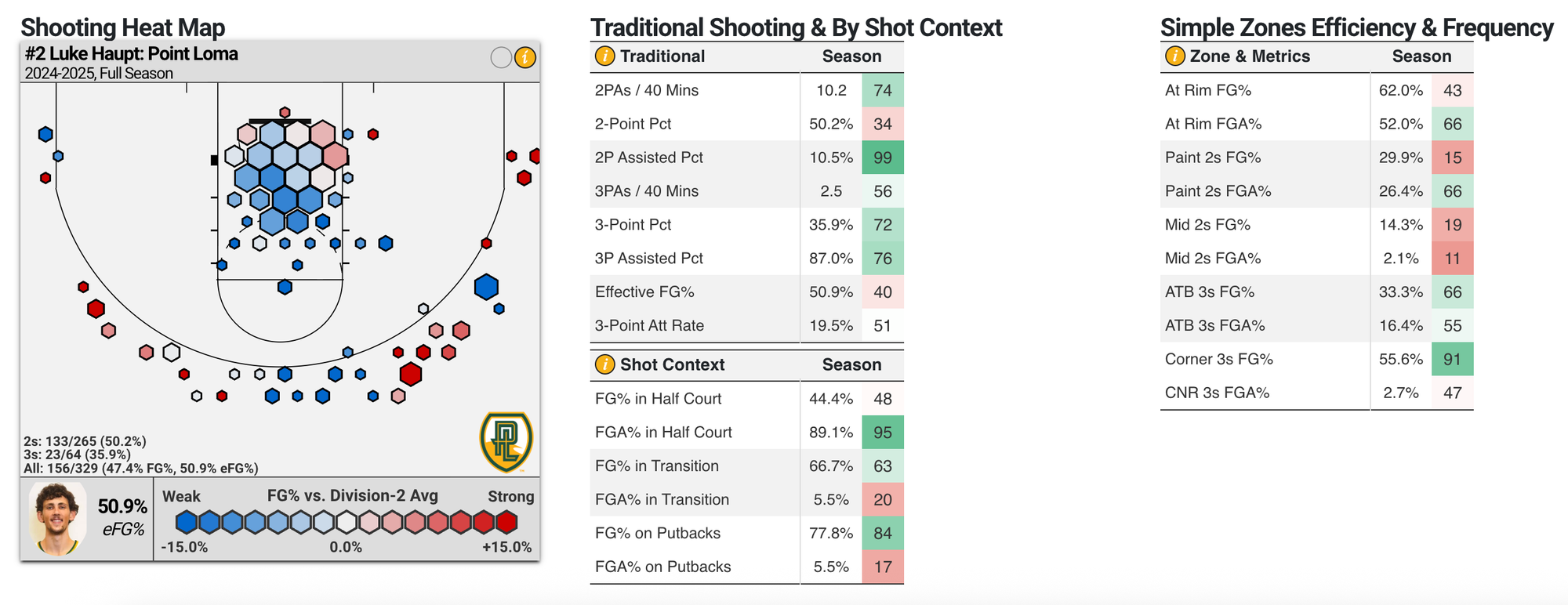
But…well, again: can he translate? We don’t know.
The other option, beyond a Patton or a JT Rock exploding at this level, is one of a variety of roulette chips. Antonio Chol is a former Rutgers recruit who was spectacular at the JUCO level last year (20 & 8 for Garden City), and he makes complete sense as the type of smaller 5 (or standard 4) that Olen loves to use on offense. But, again: completely unproven at D-1. Or maybe Tomislav Buljan, who was awesome in the top Croatian league and is 23 years old but is a stretch big in theory only. (26% from three on very high volume is not ideal.) I simply don’t know, which holds me back from liking this team more.
Bottom Line:
Eric Olen is here for longer than one year, in all likelihood, and the roster build reflects that: 10 of the 14 players here will have at least one more year of eligibility to go. What that likely means is a year that’s more building the base than achieving escape velocity, but with promising results in the meantime. Don’t be shocked whatsoever if they pick off one of our top three.
7) Nevada
Key Returners:
Tyler Rolison
Key Newcomers:
Tayshawn Comer, Corey Camper Jr., Kaleb Lowery (NAIA, The Master’s University), Joel Armotrading, Vaughn Weems (JUCO), Elijah Price
Key Losses:
Everyone, but most notably Nick Davidson and Kobe Sanders
Roster:

Reasons for Optimism:
Since Eric Musselman’s arrival for the 2015-16 season, Nevada has finished in the KenPom top 100 8 out of 10 tries, which is a pretty good hit rate for a program that had done that just six times in the previous 19 seasons. Nevada does give off the vibe of a program that should be better, but maybe it’s just inaccurate thought on our end. After all, five of their 11 NCAA Tournament bids since 1966 have come in the last eight years. It wasn’t always Nick Fazekas time, you know!
Most of the talent from the best Steve Alford teams is gone, but it’ll play in his favor that his three lowest preseason ranked teams at Nevada by KenPom (98th, 120th, and 132nd) all overachieved by an average of 37 spots. That would put this group inside the top 100 again based on their Torvik ranking of 131st.
Unlike New Mexico, who’s going with a committee approach with a lot of third and fourth options, Alford’s rebuild is built around the top scorers at Evansville, an NAIA school, and a JUCO, as well as the #2 scorer at UTEP. Unconventional, but hey, with enough roulette chips there’s the hope that one will develop into a Davidson (or, yes, Fazekas) level star. The best candidate is somehow the candidate from the NAIA level.
Say hello to Kaleb Lowery, who enters after a bonkers statistical year where he went for 19.4 PPG on 62% 2PT/39% 3PT (141 attempts!) and 10.7 RPG. Attempting to figure out how NAIA stats translate to anything else is nigh-impossible, but Lowery rates as a serious plus shooter and finisher on the offensive end. Master’s used him as a point-forward and let him run the show, which resulted in him scoring in bunches in post-ups and as a spot-up shooter, along with all the putbacks. It’s plausible to me that he may have simply been overlooked, as 247 informs me he was 6’6” and 165 (?!?) his senior year. (He’s now 6’8”, 215.)
If Alford commits to running the offense through Lowery and Lowery holds up at the MWC level, it makes the offense work for me. If not, they can still survive through good defense. Every player on this roster who played D-I hoops last year was in the 71st percentile or higher in CBB Analytics’ DRAPM stat, with Elijah Price of Fresno State being pretty much the only player on that roster to pop as a good defender. Alford prefers a more conservative man-to-man that keeps the ball in front of him, and perhaps a strategy to shrink the game by slowing it down to a crawl could add the variance this roster needs.
Causes for Concern:
I mean, I just laid it out for you: the offensive upside is based on Alford running everything through a player who is on his sixth year of college basketball but his first in Division I.
If Lowery can’t hold up, it would revert back to the old standard Alford offense of running everything through a volume guard. Tayshawn Comer from Evansville is that guy. Now, Comer’s counting stats look nice (16.2 PPG, 4.1 APG), and I’m sure he’ll be happy to play on a team where he won’t have to play nearly every minute. The problem with this concept is that Comer is a below-average jump shooter with bad shot selection, and a 39% FG% paired with a 99 ORtg in a lesser league is not exactly something I would want to rely on.
If Comer doesn’t work out the onus probably falls on Tyler Rolison, the lone serious contributor who returned to this roster. I also do not like this option much, but not through much of Rolison’s own doing. (He may be the highest-floor two-way player on the roster.) It’s that he and Comer are likely to be a really bad pairing together. Both are small (6’0” and 6’1”). Neither is a good on-ball defender, though Rolison I like more. Rolison is a fine shooter but nothing otherworldly, and he hasn’t served as a primary ball handler in ages. Even in EYBL, he was a secondary ball handler because he shared an AAU side with Kylan Boswell and Jared McCain.
That’s why I suggested the Lowery concept: it allows Rolison and Comer to play off-ball more. Rolison in particular is far better and far more efficient when he’s allowed to roam. In Comer’s last year as the non-top scorer (2023-24 Eastern Kentucky), he was nearly 27 points better per 100 possessions off-ball than on. 27! I don’t really want either of those guys running my offense if I’m Alford.
Beyond that, there’s alternate concerns elsewhere. Lowery is the only plus shooter on the roster, and even if you fudge the numbers a little Rolison is the only other thing approaching ‘plus’ here. For some reason, Alford doubled up on non-shooting 5s with Price and Joel Armotrading, which is bad as I would rate them as roughly equal players who cannot play together. Corey Camper Jr. is a 3-and-D wing that can’t shoot threes terribly well.
So: how do you like JUCO guys? This team needs a wing, and Vaughn Weems from North Idaho is a playmaker that handled an utterly gigantic load for his team. (Weems: 716 points. Next-best Deng Diew: 331.) I imagine Weems will be thrilled to be surrounded by serious talent of any kind, but Nevada needs him or literally anyone at the wing/taller guard spots to pop. It’s a shot creation game and I’m really struggling to point you to the MWC title-contending shot creator on this roster.
Bottom Line:
Of the teams in this range, Nevada feels maybe even harder to peg than New Mexico. Do you ride with Alford when his back is against the will en route to an overachievement and a top-4 finish? Do you look at the roster and see serious offensive questions that can’t be resolved, leading to an 8th or 9th-place run? I truly don’t know, which will make for a fascinating year in Reno for all involved.
8) Colorado State
Key Returners:
Rashaan Mbemba, Kyle Jorgensen
Key Newcomers:
Brandon Rechsteiner, Josh Pascarelli, Jevin Muniz, Jase Butler, Augustinas Kiudulas, Carey Booth
Key Losses:
Nique Clifford, Jalen Lake, Kyan Evans, Jalen Crocker-Johnson, Ethan Morton
Roster:

Reasons for Optimism:
For about two months last year, Colorado State was threatening Dead Dove Do Not Eat territory. A reasonably promising offseason had turned into a 7-6 start, an ugly home loss to UC Riverside, and multiple P5 blowouts. Things were looking rough for a preseason MWC contender. Then: a thing happened. On December 31, Ethan Morton got benched for Jaylen Crocker-Johnson, and from there, the Rams went 19-4.
That’s not entirely fair to Morton, but December 31 is the date the Rams settled on their third and final starting lineup of the 2024-25 season. From then onward they took off. Torvik rated them as the 26th-best team in the sport over the final three months of the year with a resume on the level of a 6 seed. Shooting 39.8% from 3 as a team certainly helps, but it was the defense that came around most prominently, settling in as a top-50 unit for the back half of the year behind outstanding defensive rebounding and all-around quality first-shot defense.

It makes sense to want to continue that run. After Niko Medved left for Minnesota, Colorado State almost immediately elevated March 2010 hero Ali Farokhmanesh to the head role. Farokhmanesh has been a fast rising star for a few years, but his smartest move was hanging on with Medved until the time was right. Now, he’ll get his chance to keep the Rams rolling, even with a heavily remade roster and general expectations of a gap year before resuming contention in the nü-Pac-12.
The good news for Farokhmanesh is getting back some solid returners to work with in Rashaan Mbemba (low-usage dunker spot king who’s a great rebounder) and Kyle Jorgensen (returning sophomore who graded out quite well on defense and has shooting upside at 6’9”). I like that! Of course, we’re here for the transfers. The guy who means the most to me in making this project go is Marist transfer Josh Pascarelli, who fits the Farokhmanesh/Medved mold of a high-volume guard allowed to run off ball screens as much as he wants. He’ll be surrounded with more talent here than at Marist, a fairly meaningful thing for a guy that shot 39% from deep on high volume.
The underrated add here I’m more into than I should be is Jevin Muniz, who could serve as a nice connector on both ends of the floor. Muniz has never popped as this amazing player and is a 32% career shooter from deep, but a 6’6” wing with a 20%+ Assist% who has scored well attacking from closeouts and handoffs in college works for the Medved offense.
Causes for Concern:
Well, a few. For one, while the Colorado State defense did see a second-half surge last year, most of the pieces that caused that surge are gone. The last two Medved defenses were the first two to rank in the top 200 in 2PT% allowed on defense. They did change their structure around pretty significantly to a droppier system (think Michigan or Cincinnati) that allowed them to shrink gaps better and force more midrange twos, but the last two teams also had Nique Clifford, an unbelievable wing stopper.
I do not think this team has such a thing available. For one, Mbemba - a good defender, but probably not an NBA Draft pick - is probably the best defensive piece on the roster. Pascarelli was an active negative at Marist on that end. Muniz has consistently been a negative. CSU doesn’t need to block shots and hasn’t in the past, but I guess I would like a more reassuring starting defensive frontcourt than Mbemba and Jorgensen, neither of whom is a rim anchor and both of whom may look undersized against MWC foes down low.
The other question is scarier. Brandon Rechsteiner comes in from Virginia Tech, where he was the lead ball handler for a truly tepid Hokies squad. I think he may actually have more talent here on what should be a somewhat lesser schedule, and certainly, his efficiency numbers (which are horrific) will benefit from no longer being asked to do it all in a role he simply may not have it for.
Alternately: he may have to do the exact same role. As mentioned, the Medved (now Farokhmanesh) system runs through ball-screen initiations all over the court with high emphasis on constant movement and spacing. You need a guard that can shoot, drive, and kick. Sounds easy enough. Rechsteiner can do the first quite well, but exactly 17 of his 219 shots last year came at the rim, per Synergy. Only an additional 14 were runners or floaters. 85% of his shots are jumpers. He’s also barely above water in assists versus turnovers, which, uh, is not what you want for your point guard.
If Rechsteiner cannot do it, Pascarelli has to do that much more, and that is an open question because Marist played one (1) top-150 opponent in his two years there. His ability to translate to the Mountain West is an open question. If they can’t handle all the on-ball duties, Farokhmanesh would likely have to rewire his entire offensive structure in Year One around running constant DHOs and off-ball screens for Pascarelli and crew to be off-ball scorers, largely eschewing much rim pressure. I’m not sure they want to do that, and it would be made easier if there was more proven frontcourt skill/force at hand here.
Bottom Line:
Ali Farokhmanesh strikes me as someone who will do quite well at Colorado State, and like Eric Olen at New Mexico, this year is about setting up the basics. It’s not an ideal roster for what someone with Farokhmanesh’s career history wants to do, so they’ll have to get creative with mixing and matching personnel to get the most out of a roster that can reasonably finish top-100 if things go more smoothly than anticipated.
9) Wyoming
Key Returners:
Matija Belic, Abou Magassa
Key Newcomers:
Leland Walker, Jared Harris, Khaden Bennett, Damarion Dennis, Uriyah Rojas (JUCO)
Key Losses:
Obi Agbim, Jordan Besbitt, Dontaie Allen, Kobe Newton, Cole Henry
Roster:

Reasons for Optimism:
Do you like being a basketball hipster? Sure you do, you signed up for this website and you’re on team #9 of a Mountain West preview.
If so, Wyoming could be your team solely so you can say you knew some coaches before they got big. Wyoming was the trampoline job (i.e., the job before they got famous) for guys like Jeff Linder (Texas Tech’s offensive coordinator), Larry Shyatt (early 2000s Clemson coach and Billy Donovan’s top assistant with a gigantic coaching tree), Don DeVoe (the only coach in Tennessee history to win the SEC Tournament prior to 2022), and, with any luck, one Sundance Wicks.
Beyond having a fantastic name, Wicks is a Wyoming native who rode a well-above-expectations year at Green Bay in 2024 to this job, but he has a pretty deep background. He’s been an assistant at five different stops, was briefly a D2 head coach, and worked as an NBA Draft trainer in Las Vegas. (You have perhaps heard of Kawhi Leonard and Isaiah Thomas, who Wicks trained prior to the 2011 NBA Draft.) Now, back home and entering Year Two after a 12-20 start, his goal will be to get Wyoming back to their glory days: the 1980s.

Yes, it’s true, history nerds: once upon a time, Wyoming made four Tournaments in eight years, including the 1987 Sweet Sixteen, and was once ranked 5th in the AP Poll. Wicks’ sights may or may not be set that high, but this is the year to keep building towards it. Based on personnel alone, Wicks is almost certainly looking to play faster this year, with his leading frontcourt candidates all being 6’7” and a backcourt grouping that’s best in transition. Get to know Khaden Bennett from Quinnipiac, an 80th-percentile fast break scorer with an 83rd-percentile free throw attempt rate.
Bennett is chaotic, which is not what Wyoming was last season whatsoever. I think introducing some amount of chaos should help differentiate Wyoming in a conference where they’ll need it. Of Wyoming’s six transfer adds that played real minutes last year, three played at a 90th-percentile offensive pace or higher, and two others were in the 60th-percentile or higher in individual transition usage.
Guys like Leland Walker from FAU and Damarion Dennis from Texas A&M-Corpus Christi will be critical for pushing the pace more offensively. I’d also keep an eye on JUCO up-transfer Uriyah Rojas, who was given alpha duties at Chaffey CC but was a tremendous scorer and is frighteningly good off the dribble.
Oddly, the most interesting piece here might be the one who barely registered any minutes. Jared Harris is a Memphis prospect transferring in after very limited usage, but at the high school level, he was a 39% 3PT shooter (per Synergy) and got downhill to the rim pretty often. He’s smaller at 6’2”, but Memphis almost exclusively recruits plus athletes that can play fast and get to the rim. If Harris pops at this level, it does change Wyoming’s ceiling in a meaningful way.
Causes for Concern:
Let’s go back to this nugget: pretty much everyone being considered for regular frontcourt time is 6’7”. Gavin Gores, a freshman, is the only player in the projected top-12 spots on this team taller than 6’8”. The Mountain West is far from a massive conference, but its members ranked 8th in Block% last year, and five of its 11 teams were in the top 55 nationally in average height. There are no obvious plus rebounders on this roster, and they may get mauled on the glass against the top half of the conference.
There’s also just the nature of Wicks’ preferred defensive scheme. In the past (AKA, not Division I), Wicks has played extended pressure schemes in the half-court that don’t necessarily force a ton of turnovers but do create shorter possessions. It’s a roundabout way of allowing his team to own the pace of the game by forcing one-and-outs for you and dragging the clock down on the other end. However, if they don’t force turnovers, there is no such thing as a rim protector I can find on this roster. That’s either going to mean a lot of fouls for a not-great frontcourt or a lot of points allowed in the paint.
While I do believe in some amount of defensive positivity here - Abou Magassa did grade out okay last year as a small-ball 5, after all - it’s really reliant on the guards to create so much havoc the ball never gets below the free throw line. Against lesser competition I think that’s a reasonable ask, but against the Utah States of the world they may well get crushed.
The other key question here is that, again, all of the best offense-first guys the roster has are the new guards, particularly Walker, Bennett, and Dennis. Like them or don’t, they’re all 6’4” or shorter. I don’t have the warm and fuzzies over the frontcourt returners, as mentioned, and the cheat code to surviving in the MWC is to generate a minimum of one good wing. The returning candidate for this would be Matija Belic, but I can’t say I’m inspired by someone with a career -3.1 OBPM and a 96 ORtg on 15% Usage%.
So: take your pick of up-transfers. There is Adam Harakow, a 6’7” transfer from Lake Superior State, who had a 97th-percentile RAPM and shot 40% from deep on high volume to go with a 67% (!) FTA Rate. He’s also a really good rebounder, particularly on offense.
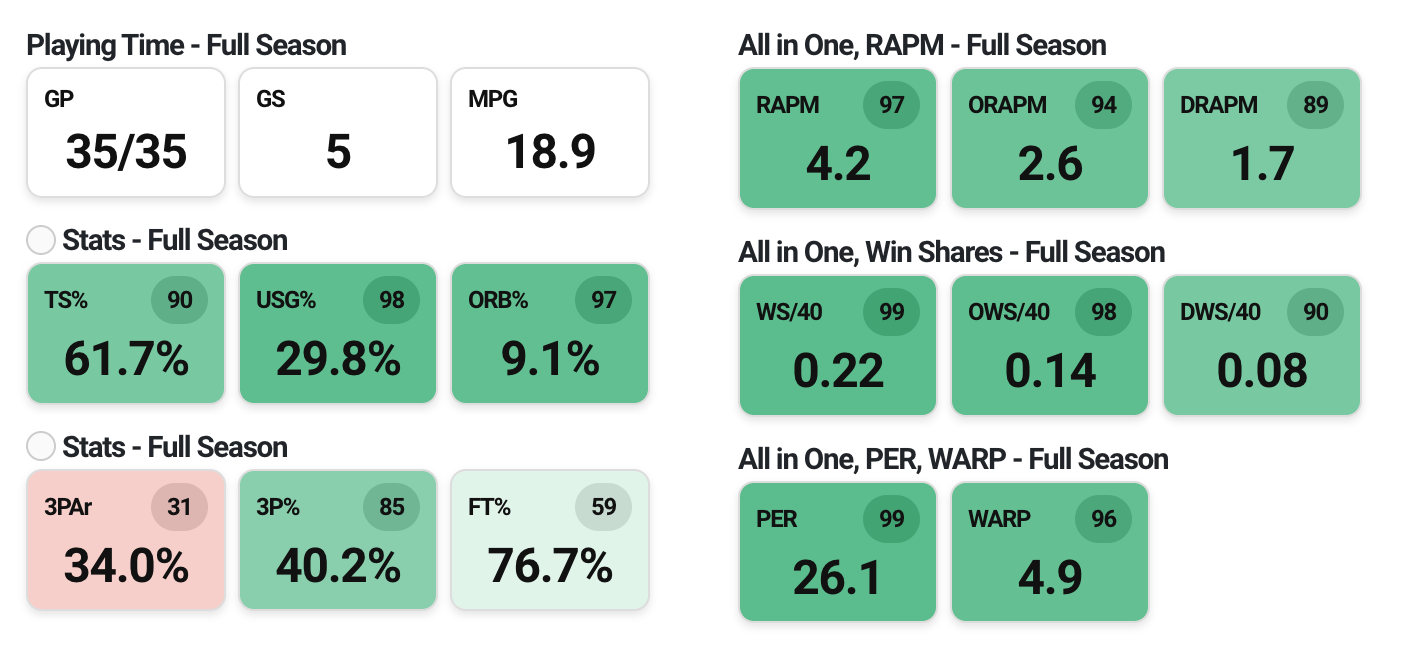
If he translates, it solves your wing issues immediately. If not…uh, hopefully Belic or Magassa can play? Maybe a freshman? Maybe fellow D2 guy Kiani Saxon from Missouri Western, who functioned more like an off-ball big at that level?
Basically, you have guards that can and should score, and the pace and energy will pick up…but I have no confidence at all they can stop anyone good. Wicks isn’t a zone guy and never has been, but I kind of wonder if some sort of 1-3-1 zone that achieves extended pressure may help alleviate just how dire the rim protection would be. Then again, said zone likely exacerbates the rebounding issues. Not ideal.
Bottom Line:
Sundance Wicks is a very exciting individual, and certainly, the injection of blue-collar effort and grit and whatnot is going to play really well with the Wyoming faithful. They’ll need an injection of talent next, but I have faith that better days will come fairly soon. They may even come this season, as the path to them being a surprising headache in league play through a nice group of score-first guards isn’t impossible.
10) San Jose State
Key Returners:
Jermaine Washington, Sadraque NgaNga
Key Newcomers:
Colby Garland, JaVaughn Hannah, Yaphet Moundi, Marcus Overstreet, Adrian Myers
Key Losses:
Josh Uduje, Donovan Yap, Will McClendon, Latrell Davis, Robert Vaihola, Sadaidriene Hall
Roster:
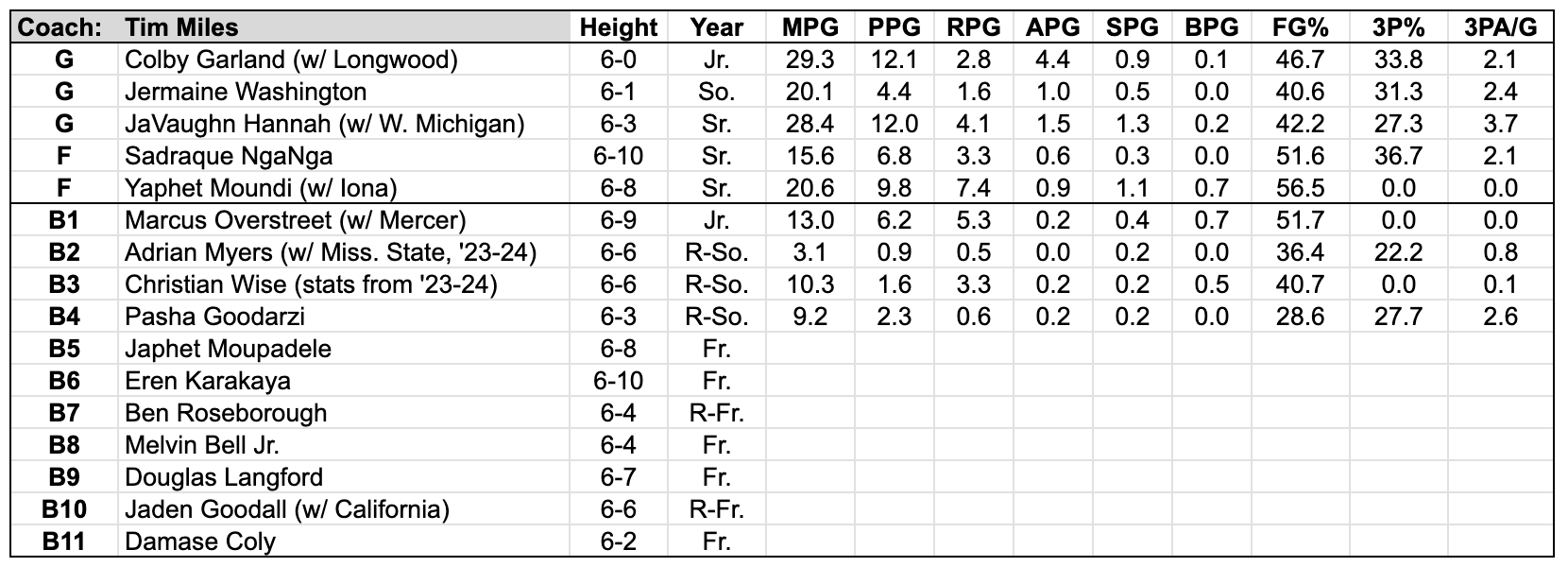
Reasons for Optimism:
Tim Miles is in that rarest of categories: a genuinely underrated Mountain West coach. SJSU has beaten their KenPom preseason projection in three of his four seasons and has two top-200 finishes in the last three years, certainly worth praising when the Spartans hadn’t done it in the 10 seasons prior to his arrival. Miles never got enough credit for doing a solid, decent job at Nebraska or for dragging Colorado State out of the trenches back into the steady base it’s at now.
Unfortunately for Mr. Miles, SJSU pretty easily has the lowest sporting budget of anyone in this conference not named Air Force. NIL is non-existent outside of some being spared for football’s rise over the last ~15 years. It’s a hard job, and therefore grace must be given when a season like last year’s 15-20, 7-13 MWC run is probably their third-best of the last 25 years.
Still, I can drum up a little excitement for you in spots. Intriguing second chances exist throughout the roster, such as JaVaughn Hannah, a former 3-star recruit at Western Michigan now hoping to make good on initial promise, along with Adrian Myers (3-star Mississippi State ex-pat) and Yaphet Moundi (Iona’s starting center last year who probably wouldn’t be here had his coach not been fired).
However, the best player here is pretty easily the one who had a grand total of two Division I offers out of high school. Colby Garland has now gone from Drake to Longwood to here, and at his previous two stops he popped as a highly-efficient ball-handler that adores a midrange jumper.
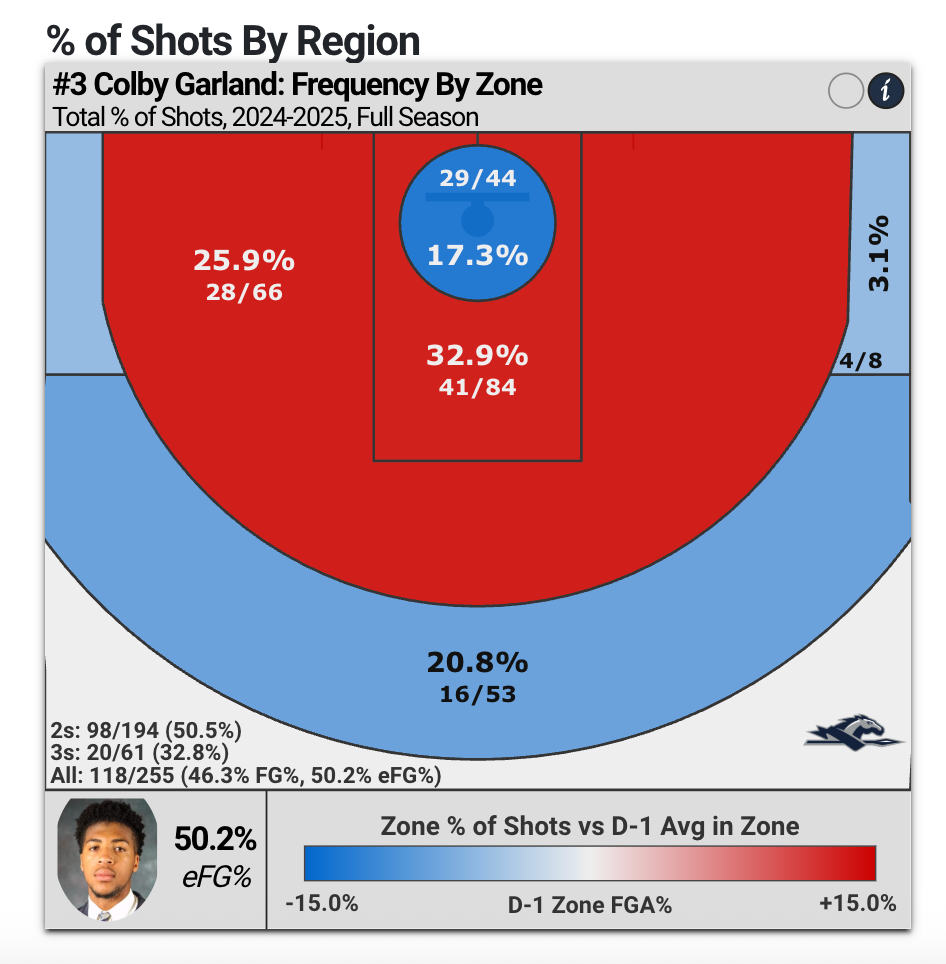
In an SJSU offense that routinely uses ball screens to create these exact shots, it wouldn’t floor me whatsoever to see Garland be the lead scorer and alpha dog here.
The other piece here I’m quite into is Moundi, the former JUCO guy who was an unbelievably good rebounder for Iona last year. To boot: there were all of eight players in the sport last year to post a 15%+ OREB% and a 25%+ DREB%, Moundi being one of them and tied for the shortest of the crew at 6’8”. Considering Moundi also had the highest Steal% of this grouping, he tracks for being a sort of off-brand Tobe Awaka of the Mountain West. If he comes close to that promise, SJSU has a really, really intriguing top two here.
Causes for Concern:
Well, there’s the rest of the roster. The lone other piece I have some form of trust or interest in is returner Sadraque NgaNga, not because he projects as super impactful but because he is a 6’10” frontcourt player who shot 35% from three last year. That’s a workable mismatch even if he’s openly bad on the defensive end. Beyond that…well…
The budgetary problems at San Jose State are numerous. For one, the athletic revenue figures publicly available from the Knight Commission actually put SJSU last in the Mountain West in both revenue and expenses behind Air Force. That’s frankly in I Don’t Believe You territory, but USA Today’s database backs it up, too. Pretty much no matter how you slice the data, SJSU is last (donor contributions, ticket sales, corporate sponsorship) in all revenue data with some amount of variance. (I will note the football program seems to rake in the dough for buy games, though.)
So: I can’t go too hard on a nigh-impossible job. But, well, they probably could’ve Moneyballed it a little better here. The Hannah add is just brutal for team success as a dramatically inefficient player who needs the ball in his hands to play well and who would be far better served in an off-ball role. If he’d been good in the MAC, I’d tip the cap here, but he was an average starter on a bad MAC team and is now jumping to a much tougher league. He’s a projected starter here, which scares me massively.
It’s rough depth-wise, too. The bench options here are some mix of Marcus Overstreet (lesser Moundi, which means they can’t play together), Myers (hasn’t played serious minutes since spring 2023), Christian Wise (returner coming off an ACL tear), or Pasha Goodarzi (low-usage redshirt sophomore who shot 29% from the field last season). They’re going to have to pray that both Garland and Moundi are top-20 players in the league to sustain a run at a .500 league record, and that may simply not happen.
Beyond that, your hope is in one additional returner: Jermaine Washington. Washington was abominable on offense last year but came around defensively in league play, and I can excuse both as a freshman on a below-average MWC roster. Miles seems to like him, and early reports indicate he’s the likely starter at the 2. I don’t buy him as a shooter, but as a downhill driver in AAU he was quite good. Add a shot and you’ve got something there, but early returns last year on that front were…not promising.
I guess my ultimate ask here is trying to figure out how Miles differentiates SJSU from the pack and adds variance. They could take a billion threes but Garland’s the only plus shooter, and roughly half of the rotation doesn’t really shoot to begin with. Like Wyoming, I wonder if more zone usage could be in their future simply to add shooting variance in their favor. If you’re going to lose games at this level, it doesn’t matter that much to me if it’s by 10 or 30. If it adds the chance you could steal one off a UNLV on the right night, why not?
Bottom Line:
Tim Miles has an impossible job, but in said impossible job, he’s achieved competence that San Jose State basketball hasn’t seen in a generation. Unfortunately, the risk and serious downsides of this roster are such that Miles is likely to not overcome beyond staying out of the 11th/12th-place tier. It’ll take some coaching creativity and creative use of the roster itself to do much better.
11) Fresno State
Key Returners:
Zaon Collins
Key Newcomers:
Jake Heidbreder, Cameron Faas, and a whole lot of French kids
Key Losses:
The fans. Also, six of the top seven scorers
Roster:
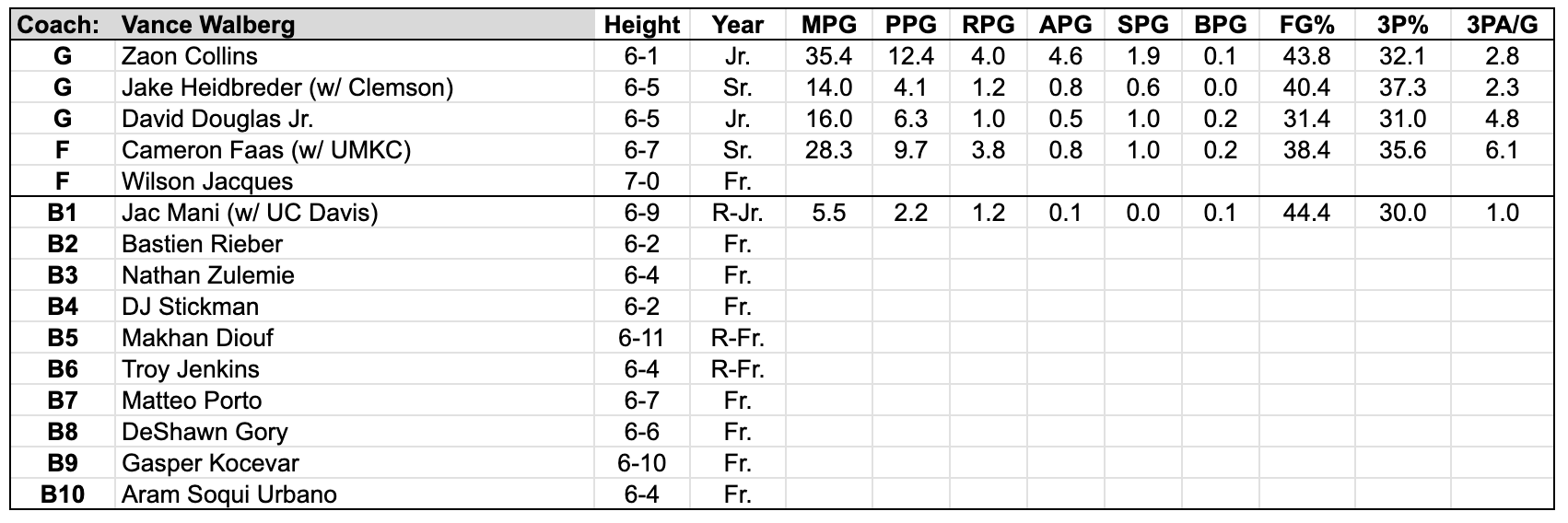
Reasons for Optimism:
Well, they’re not Air Force. In all seriousness, writing this section is pretty hard, but there is something to say for the “it can’t possibly be worse” theory. Vance Walberg, a completely baffling hire that had to have been a favor to a booster or boosters, oversaw perhaps the most disastrous single season campaign I can remember that wasn’t at New Mexico State. Players quit, gambling scandals happened, half the team got injured, the available players went 6-26, and it could not have possibly been a worse Year One for the master of the Dribble Drive Motion offense.
So, hey, this website believes in second chances. I believe in second chances. Why not a second chance for Mr. Walberg, and especially for lone returning major contributor Zaon Collins? Collins is the lead guard for this particular version of the DDM, and while his two-way impact is questionable, he did rank sixth in the MWC in Assist Rate. The DDM requires a point guard that’s fast, can penetrate, and is happy to look up for a kickout. Collins at least meets some version of all three, though as a top option it’s not ideal.
I also have to admit being fully in the tank for Jake Heidbreder being back in the Mountain West. After a year at Clemson where he was mostly asked to take threes and defend somewhat reasonably, Heidbreder will get to play off-ball in an offense that will feed him spot-up threes pretty much as often as he would like. You can say the same for Cameron Faas from Kansas City, though he doesn’t attack closeouts as well as Heidbreder can.
The rest of the optimism is based on the reverse logic that the devil you don’t know is better than the one you do. An astonishing seven members of this roster will come in from overseas, three of which are French. It seems the most likely to get big minutes is 7-footer Wilson Jacques, who averaged 14 & 10 in France’s U21 league and profiles as a serious plus rebounder, but I would also keep an eye on fellow Frenchman Bastien Rieber, who may have to play out of necessity in this offense as someone with a gigantic Assist% (47%?!?) in a weaker league and as a guy who did shoot 41% from three on limited attempts. Also, Arman Jovic told me that Aram Soqui Urbano is a bonkers shooter, so book it.
Causes for Concern:
This is a two-team tier at the very bottom of the league. Air Force has real, structural reasons to be here. I think they are reasons that can be fixed by not doing the exact same thing for 30+ years and never deviating once, but they have a real excuse. They’re not participating in revenue sharing, and quite frankly, you don’t go to Air Force to get an NIL payday. You go there for, you know, a military career.
Fresno State being in this tier is a failure. A complete, structural failure that takes several major screw-ups, all of which have to happen in a row, all of which have to be so bad that it creates a vacuum of suck to take you straight down to the bottom. In some manner, it’s an impressive achievement. Air Force went 1-19 last year and finished in the 300s at KenPom. Fresno - a team that spends as much money on its men’s basketball program as BOISE STATE AND NEW MEXICO and has more annual revenue than anyone in the league other than Boise and UNLV - went 2-18.
Then. THEN. In the middle of a truly horrendous coaching hire, Fresno managed to have two players get banned for life because of gambling on their own statistics. It is one thing to hire a coach who has not touched a college basketball court in nearly 15 years. It is another to have a gambling scandal. It is another to have the worst team in school history. It is another to give the coach who oversaw all of that a two-year contract, which means he is coaching his last season barring an extension to the guy who…you know, oversaw all of that.
And boy howdy, it is another thing entirely for the AD who did all of that to NOT EXIST. That’s right: Fresno State didn’t even have an athletic director for this search. (They hired one three months later.) It was run by the president and prominent boosters. Surely, an athletic director would have considered hiring a head coach further away than four miles from the campus just because he lived there and - surprise! - was really friendly with those who have large pockets.
Anyway, there is a basketball team and it is also quite bad. There is not a single big man on this team that anyone can point to and say “he will stop a drive to the basket.” That is a problem. There is exactly one player on the entire roster that grade out well on defense in Collins, which I suppose helps for POA but is bad for literally everyone else. The entire project here is built on a bench entirely made up of true freshmen or redshirt freshmen that have either never played a college game or, in the case of DJ Stickman, were coached by Walberg in high school.
Bottom Line:
Maybe I am wrong. Maybe the internationals turn this roster and project completely around, maybe the pace and variance of all this produces a team that routinely drops 75+, and maybe the defense just simply isn’t as atrocious as it looks. Or maybe all of this is what it looks like, and Fresno will be in the market for a new, younger head coach next offseason.
12) Air Force
Key Returners:
Kyle Marshall, Wesley Celichowski, Caleb Walker
Key Newcomers:
…none?
Key Losses:
Ethan Taylor, Luke Kearney, Jeffrey Mills, Will Cooper
Roster:
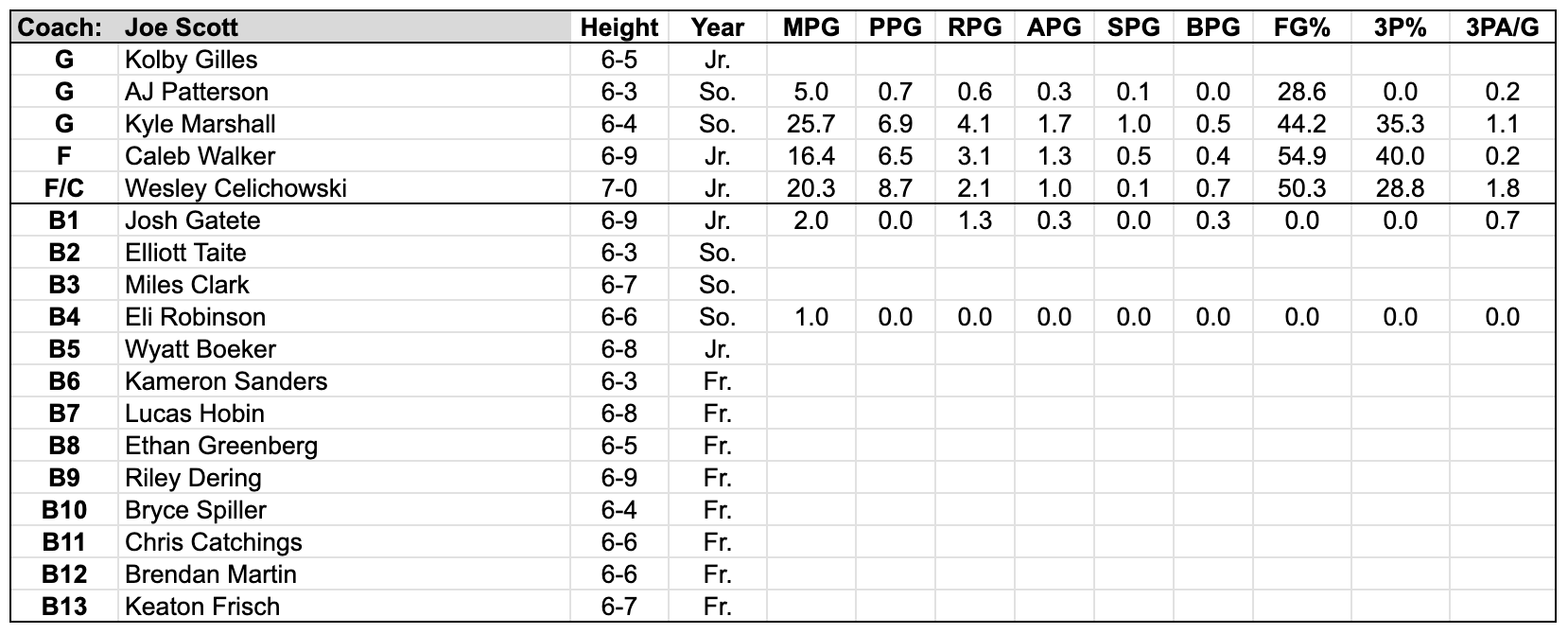
Reasons for Optimism:
…………
………………..
I mean, Joe Scott is there. The 2003-04 Air Force team was pretty awesome. So was the 2012-13 Denver group. That might be it.
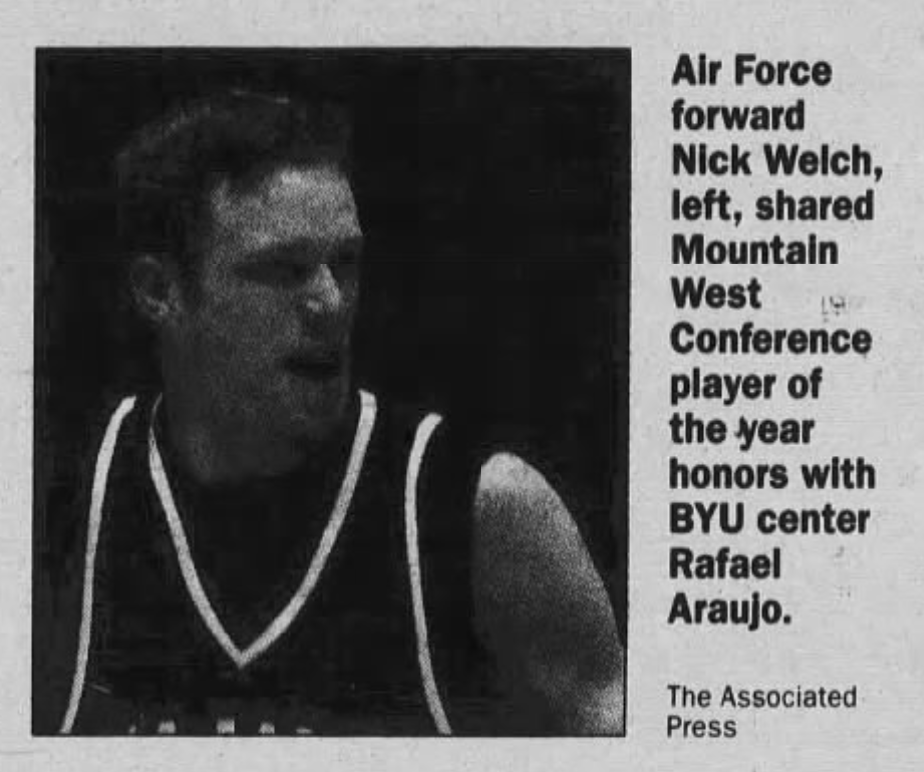
I’m not sure what more can or should be said here. In the NIL era, Air Force is competing on a completely different level from everyone else in this league, and it’s now been 12 years since their last >.500 finish, an astounding 18 since they finished above .500 in conference play. There is no optimism when the optimism is “what if we go 5-15.”
The upside is that every year or two, Air Force and Joe Scott generate a guard or smaller wing that actually pops as both a plus shooter and a plus defender. Kyle Marshall would be your candidate for that here, as a returning sophomore who entered the portal but chose to come back. He has a good jumper that he should take more often. Wesley Celichowski graded out well as a defender last year, and at least on paper he is easily this team’s best player.
The Joe Scott system is slow as snails and takes a billion threes, and even with rosters completely bereft of talent or starts they’ve been top 100 in eFG% three out of the last five years. You should see some shots go in. On the nights where the random number generator goes their way, they could make 13 threes.
Causes for Concern:
This team went 4-28, 1-19 MWC last year and lost the only truly good player from it in Ethan Taylor.
Fine, they’re asking me to write some more. I guess at the core, this is the type of system that worked really well when no one had heard of Daryl Morey, Ben McCollum, or ESPN’s Giant Killers series that Jordan Brenner created. It’s so slow, they take so many threes, and they pass the ball so much that they do create good shots. There’s just nobody here to hit them, and the problem is about 10 times worse on defense, where the athleticism is almost non-existent.
Scott has tried out a zone press to slow teams down, but all it ends up doing is speeding opponents up into super-easy shots at the rim. AFA ranked in the 7th percentile in both rim attempt rate allowed and rim FG% allowed, an exceptional combo when your theoretical goal is to limit possessions. They actively avoid rebounds on offense, which would be good if they didn’t also routinely have turnover rates in the 300s nationally.
I truly do not believe it’s impossible to win at service academies. Just in the last decade, Army posted a top-200 finish, Navy won a regular season Patriot League title, and VMI finished top-200 two years in a row. Air Force football wins and wins often. Army football won its league LAST SEASON. I don’t know what you do about a school that’s run a Princeton offense for going on 30 years but hasn’t won with it in 20. There’s no penalty to find your niche; there’s surely better ways to do it.
Bottom Line:
Sometimes, service academy schools do surprise you, and in the past, Joe Scott has surprised a lot of people by winning at impossible-to-win spots. However, this hole might be too deep for he alone to get out of. It’s going to take something extreme to fix Air Force.

